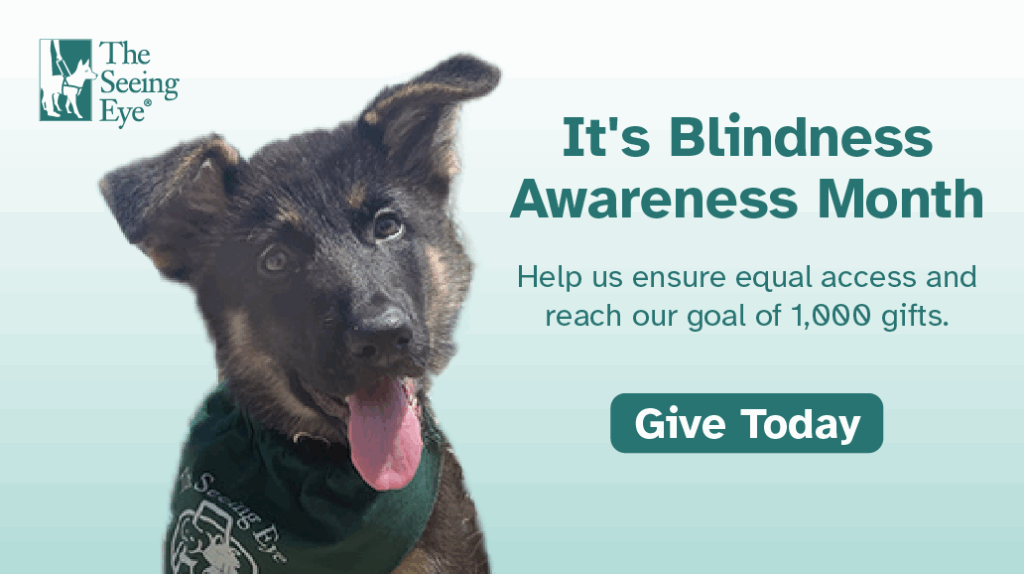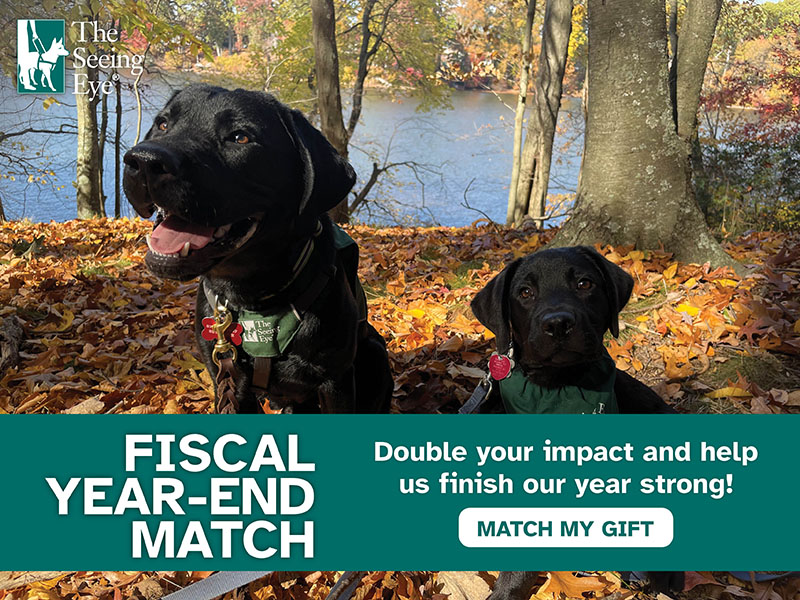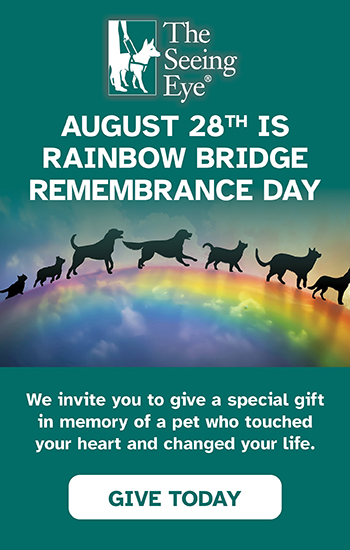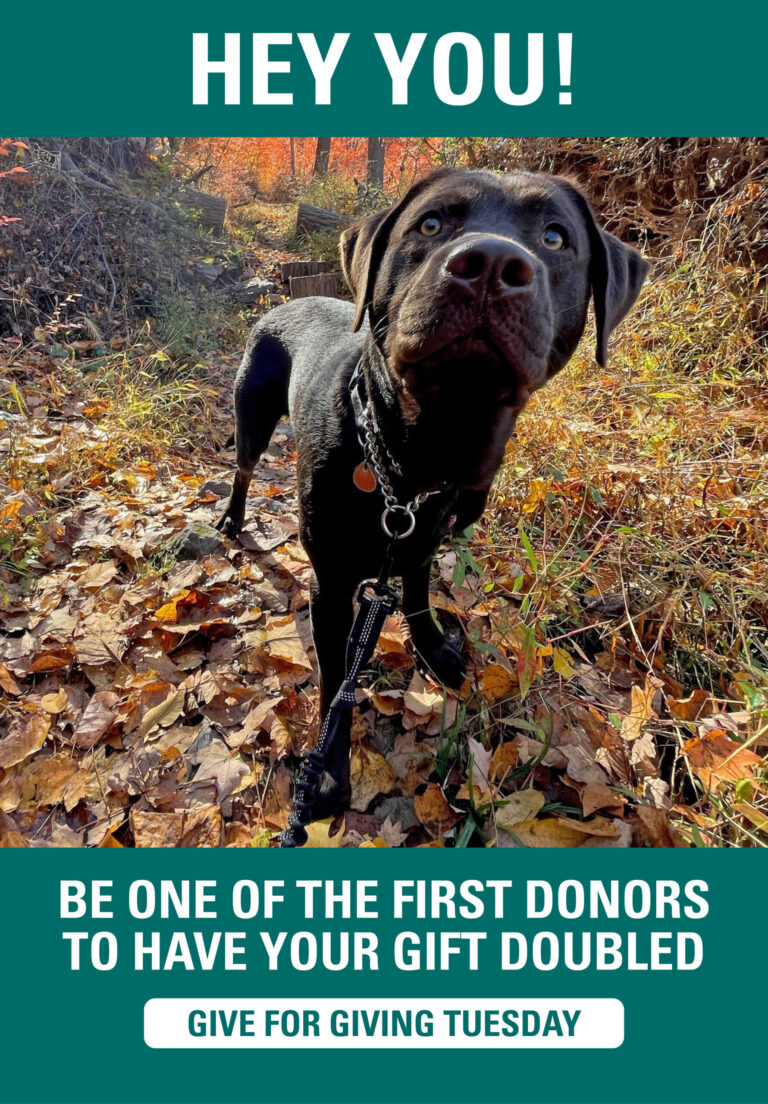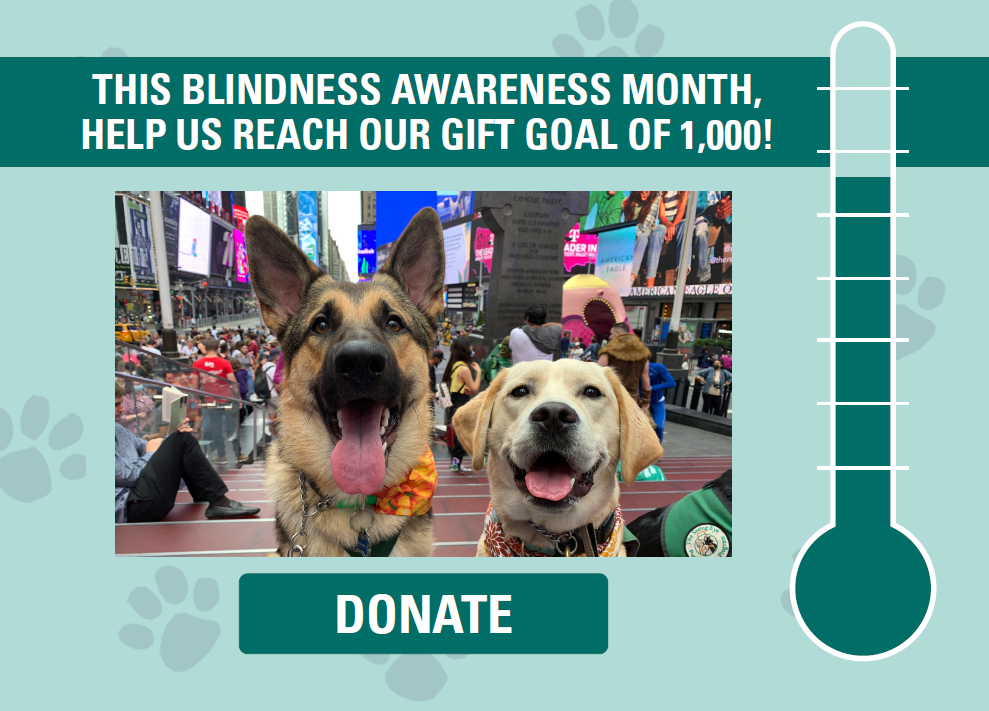Access & Advocacy
Frequently Asked Questions
Service Animals In Public Places
Today, more and more people with disabilities are relying on animals to increase their independence or help manage their symptoms. Unfortunately, as the number of service animal teams has increased, so has the confusion about which ones are actually service animals. The important thing to remember is that no matter what, an animal in a public place must be under the control of the handler and appropriately behaved.
Frequently Asked Questions
What Is, and What Is Not, a Service Animal Under the ADA?
The Americans with Disabilities Act (ADA) regulations define service animals as dogs that are individually trained to do work or perform tasks for people with disabilities.
Guide dogs are service animals because they help people who are blind or have very low vision avoid obstacles and navigate places they wish to go. Under the ADA, only dogs are service animals, except in rare instances where miniature horses are allowed in public places. Dogs whose sole function is to provide comfort or emotional support do not qualify as service animals under the ADA, but some states may have laws that provide protections for people accompanied by emotional support animals in public places. The ADA requires that service animals in public places do something affirmative that helps a person with a disability. Also, the work or task a dog has been trained to provide must be directly related to the person’s disability. Examples of work or tasks dogs perform that are directly related to a person’s disability include guiding people who are blind, alerting people who are deaf, assisting a person using a wheelchair, alerting and protecting a person who is having a seizure, reminding a person with mental illness to take prescribed medications, and calming a person with Post Traumatic Stress Disorder during an anxiety attack. This list is not exhaustive; there are many tasks that dogs can perform for people with disabilities.
Who Is Covered by the ADA?
Most public places are covered by the ADA. People with disabilities are generally allowed to be accompanied by their service animals in any part of a facility where the public is allowed to go, including state and local governments; nonprofit organizations; establishments that sell or prepare food; health care facilities; hotels and other places of lodging; and recreational settings. Places of worship such as churches, temples, synagogues, and mosques are exempt from the ADA and are therefore not required to grant access to people accompanied by service animals. However, some states or municipalities may have laws that cover religious institutions and require them to grant access to people accompanied by service animals.
How to Tell if a Dog Is a Service Animal?
Sometimes people working for an entity covered by the ADA are not sure if a dog is a service animal. Although they are often wearing harnesses or vests, service animals are not required to wear them. If a person accompanied by a service animal has a disability that is not obvious or readily apparent, staff may ask only two questions:
1) is the animal required because of a disability
2) what work or task has the animal been trained to perform?
Staff cannot ask about the person’s disability, require medical documentation, require a special identification card or training documentation for the dog, or ask that the dog demonstrate its ability to perform the work or task.
It is usually easy to identify a guide dog team. Guide dog harnesses tend to have a leather body piece that encircles the dog’s body just behind its front legs. The handle is U shaped and attaches to the body piece to provide the handler guidance. You might hear the handler issue commands like “forward”, “left”, and “right”. The guide dog helps the handler avoid obstacles and navigate through spaces safely, but the handler’s commands provide the dog with direction about where to go.
Can a Handler Be Asked To Show ID or Certification?
One of the most common problems guide dog handlers face is being asked to show certification or identification proving that their dog is a service animal. It is no longer unusual to come across people and organizations selling certification and registration documents for service animals online. However, these certifications and registrations do not give a service animal handler any legal rights, and covered entities have no legal right to ask for them as a condition for entry into their establishment. Some guide dog schools do provide ID cards and people may choose to show ID for their dogs under certain circumstances, but this is a personal choice, not something a public entity can require.
Virtually anyone can purchase or obtain an ID for an animal whether it is trained to perform tasks for a person with a disability or not. Not only is it illegal to require that a person accompanied by a service animal provide ID for the animal, it is also not a reliable way of determining whether a dog is really a service animal. Fortunately, as discussed earlier, it should be fairly easy for staff in public establishments to identify guide dog teams. Watching a dog perform the task of guiding its owner is a far more reliable way to determine that the dog is a service animal than burdening a handler by asking them to produce ID.
When It Is Illegal to Say No to a Service Animal?
Public establishments cannot legally refuse access to service animals based on the size, weight or breed of the dog. An establishment can refuse access to an animal or ask that it be removed if it poses an actual threat, but cannot do so based on generalizations about the breed.
It is illegal to deny access to people working with service animals because of allergies, fear of dogs, or cultural or religious objections to dogs. Staff also cannot isolate people who use service animals from other patrons, treat them less favorably than other patrons, or charge cleaning fees because a dog sheds. Staff cannot refuse access to someone with a service animal because they did not contact the establishment ahead of time to let them know they would be accompanied by a service animal.
When It Is OK to Say No to a Service Animal?
All too often, public entities are frustrated because they find themselves with misbehaved or disruptive animals on their premises. When that happens, assuming the animal is a “fake service animal” is not the place to start because it no longer matters at that point. Public entities may deny access to service animals if the dog is not housebroken or the person working with the dog does not effectively control the dog.
Service dogs should always be leashed unless a person’s disability requires them to use another means of controlling the dog. Service dogs should either be on the floor at all times or in the arms of a handler who needs to carry the dog in order for it to perform a task. Stores do not have to allow service dogs in shopping carts.
A service dog that is engaging in behavior like repeated barking or growling; jumping up on people or tables; or roaming around unattended by the owner is not under control. When assessing whether a service animal’s behavior is acceptable, establishments should consider whether comparable behavior would be tolerated if a service animal was not involved. For example, in an environment where noises like loud cheering or a child crying is tolerated, occasional barking should not result in a person accompanied by a service animal being asked to leave.
Unprovoked violent behavior or a history of bad behavior by a service animal is unacceptable and can be grounds for denial of access. However, if someone provokes disruptive behavior by taunting or injuring a service animal, the establishment should give the handler an opportunity to gain control over the animal and ask the person provoking the animal to leave. If staff denies access to a service animal because the handler is not maintaining control over it, the person with a disability must be allowed to enter the establishment and conduct business without the service animal.
How Do State Laws Affect These Rules?
Be aware that some state laws define service animal more broadly than the ADA does and place greater obligations on public entities. For example, some states have laws requiring public establishments to allow access to people accompanied by service animals in training or puppies being raised to become service animals. Also, there are some state and local laws that allow people to take emotional support animals to public places. You should check with your state and local government agencies to find out about these laws.
At the same time, many states have recently enacted laws making it a criminal offense to fraudulently represent that an animal is a service animal. People who work with service animals must also comply with state and local laws requiring vaccinations and dog licenses, leash laws, and waste removal laws.
Where Can I Go For More Information?
For more information about service animals and the ADA, check out the Department of Justice’s Requirements and frequently asked questions or call the DOJ’s toll-free ADA Information Line at 800-514-0301. Complaints of disability discrimination can be filed with DOJ online, by phone, or by mail.
You can also download our 5 Tips For When You Meet A Seeing Eye Dog (PDF).
What Are My Rights In Canada?
In Canada, federal human rights legislation, such as The Canadian Human Rights Act, protects the right to public access for people who work with service animals. Human rights laws also exist at the provincial and territorial levels and may be known as The Human Rights Code or Human Rights Act depending on the province or territory. Canadian human rights laws cover both the public and private sectors. If you encounter a problem with access while working with your guide dog, you will need to determine whether federal or provincial/territorial law covers the issue in question. If you are unsure, contact the Human Rights Commission in your area for assistance.
Although there may be slight differences in the way that jurisdictions deal with human rights matters and guide dog access, human rights protection is the same no matter where you are in Canada. Generally speaking, human rights legislation identifies a service animal as an animal that is individually trained to perform tasks related to a person’s disability such as a dog trained to guide a blind person. A person accompanied by a service animal is permitted to enter into any place open to the public including places such as stores, restaurants, theatres, hotels/motels, educational facilities, health care facilities, recreational and cultural centers, places of worship, housing, and all modes of transportation.
Employers also have a duty to accommodate a person with a service animal up to the point of undue hardship. To prove undue hardship, an employer must provide concrete, objective and substantial evidence supporting this claim and must demonstrate that all options for accommodating such a person have been considered.
If you believe that you have been denied access to a public place or denied employment because you use a service animal, you can file a complaint with the appropriate human rights commission. In addition to human rights legislation, some jurisdictions have specific laws dealing with service animal and guide dog access such as Alberta, British Columbia, Ontario, Newfoundland and Labrador, and Nova Scotia. Also check out this additional resource on Canadian guide dog legislation.
Changes are also underway at the federal level. In 2019, the Canadian government introduced the Accessible Canada Act, which applies to the federal government and related agencies and organizations. This law aims to ensure that everyone in Canada can fully participate in society. In the future, anyone who is negatively affected by barriers because of their disability will be able to file a complaint under this Act. For more information about the enforcement of the Accessible Canada Act, contact the Canadian Human Rights Commission or check out this article about Canada’s first Accessibility commissioner.
If you are having an access issue, please contact our Advocacy & Government Relations Department at 973-539-4425 or email advocacy@seeingeye.org.
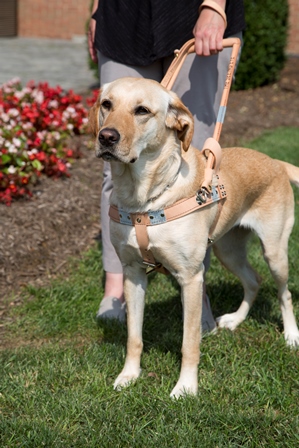
It is usually easy to identify a guide dog team. Guide dog harnesses tend to have a leather body piece that encircles the dog’s body just behind its front legs.


